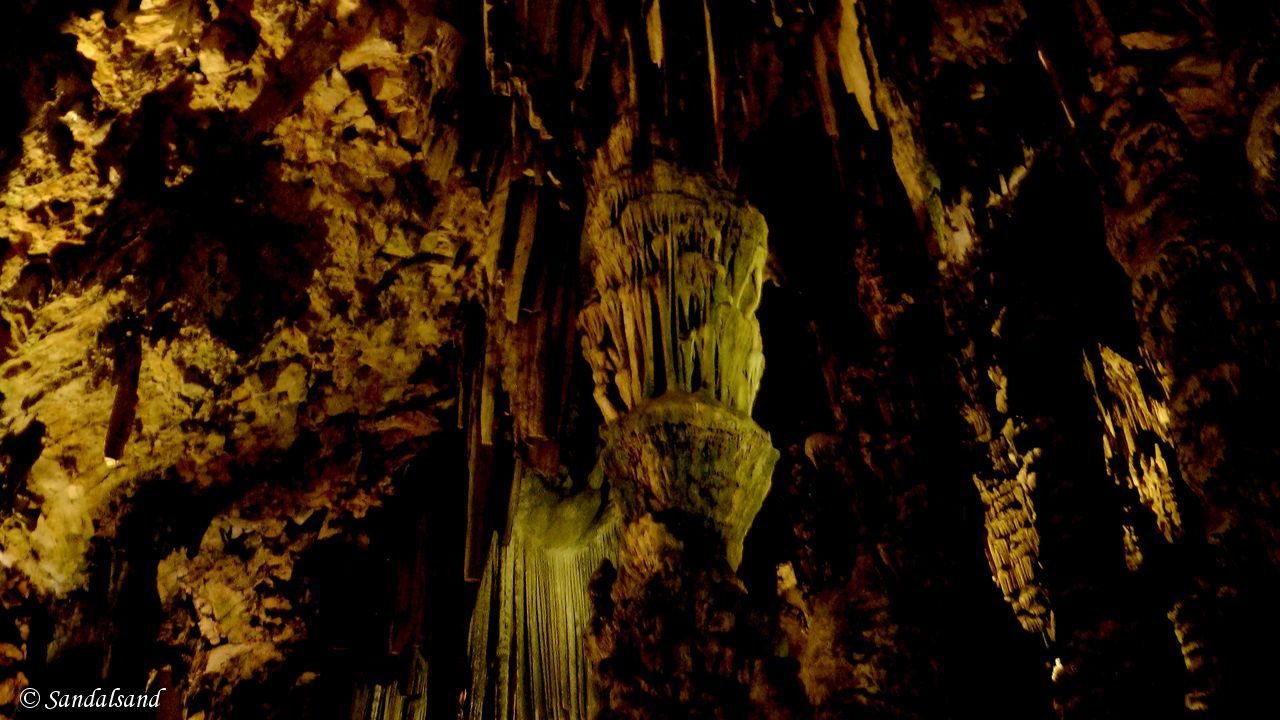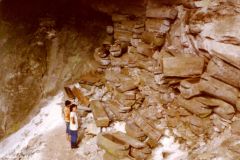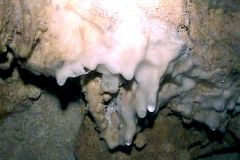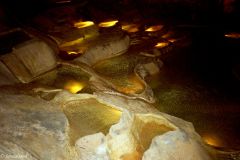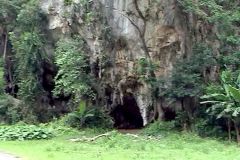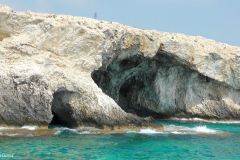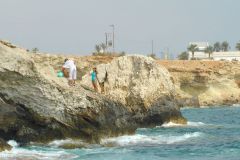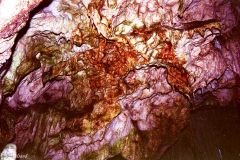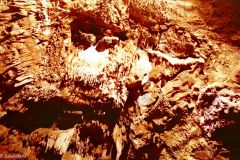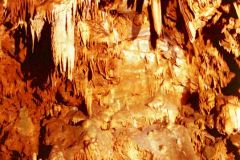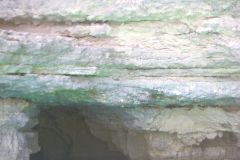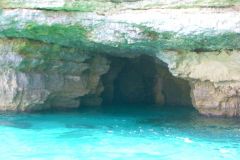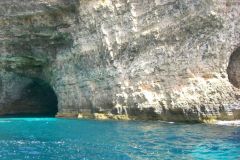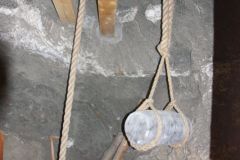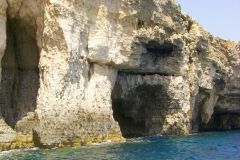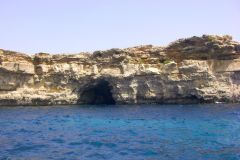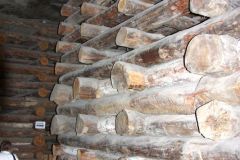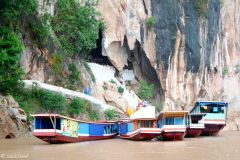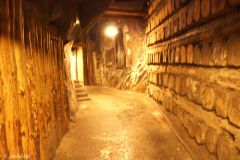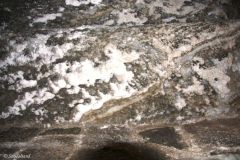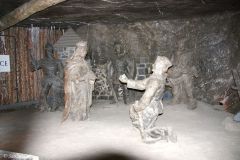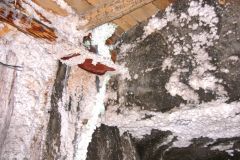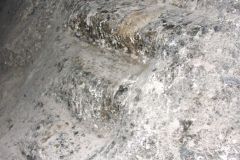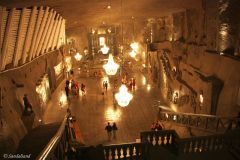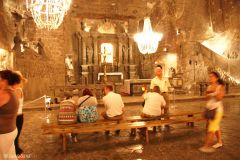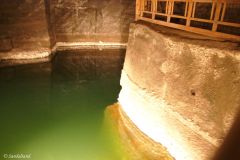A cave is a hollow place in the ground, often very deep but also quite small like a grotto. Here is a nice selection av 10 great caves.
This post is part of a series portraying the classic Elements of Nature: Earth, Fire, Water, Air. Caves are examples of the first element, Earth.
Solutional caves
Solutional caves are the most frequently occurring caves. They form in soluble rock and may become very large. I will be presenting seven examples of solutional caves. The hyperlinked titles are to my articles from the visit. So, let’s start with the first of our 10 great caves.
1. St Marcel Grotto in Provence, France
The St Marcel Grotto is pictured below. So far 57 km of galleries in this vast cave system has been explored. The guided tour will take you a few hundred metres into the cave, past the water-basins you see on the picture and into huge galleries and rooms. There once was an underground river running here, but at one time in history it dried out.
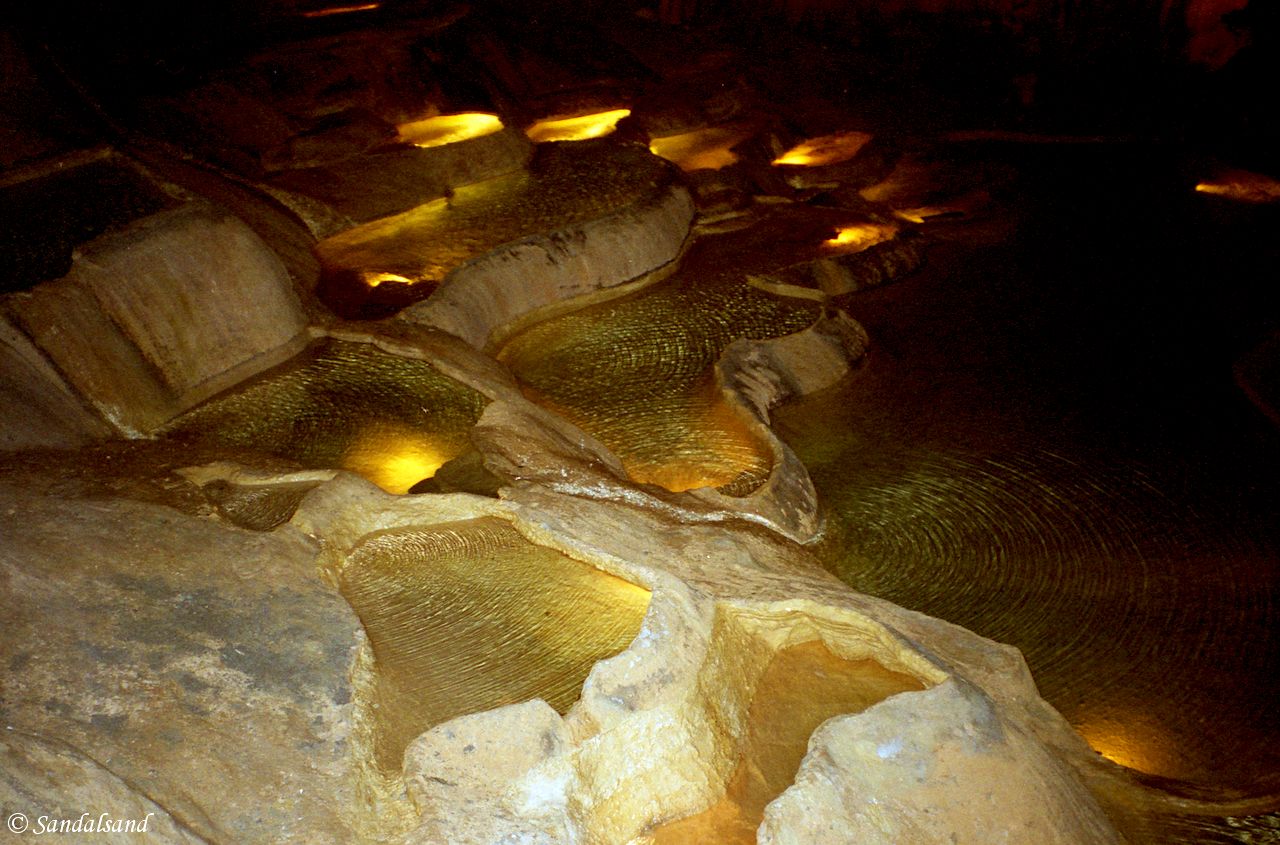
Grotto St Marcel in southern France
2. Petralona Cave in Chalkidiki, Greece
This cave is most famous for the discovery of a 200,000 years old skull of an early human being. This was my first encounter with stalactites and stalagmites. Many years ago, I found this cave very exciting. This is not the only cave in Greece by the way. Greece consists of 65% limestone. Naturally, there are numerous caves throughout the country.
I say limestone, but that is only one of several types of rock often labelled the generic term of karst.
3. Damlata Cave in Alanya, Turkey
The Damlata Cave is not unlike the one above. Turkey’s terrain is also to a large degree made of limestone making the job easier for the forces of nature to form the rock into different shapes. And what are the forces? Primarily water – running and dripping over millions of years. Wind as an eroding force is not very much of an issue in these cases, nor is volcanic eruptions or movements of the Earth’s crust (i.e. earthquake).
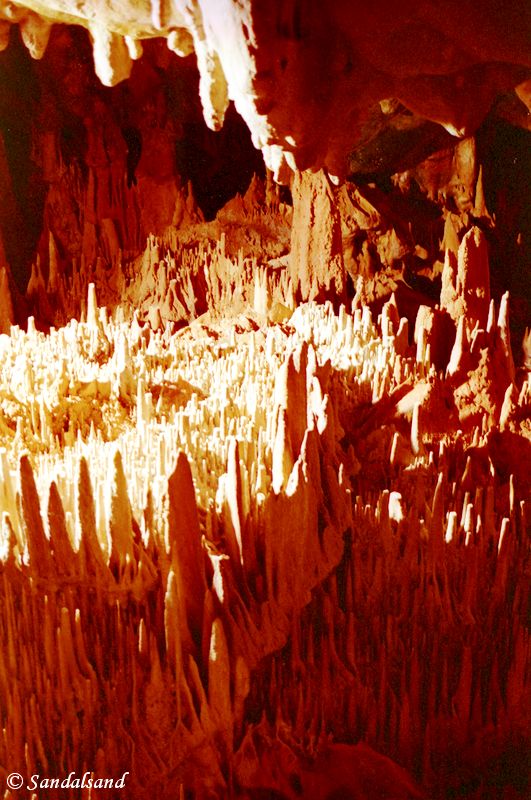
The Damlata? Cave in Alanya, on the Turkish Mediterranean coast
In case you don’t remember, and I have to remind myself constantly of it, stalagmites point upwards, stalactites hang from the roof down. Now, let us continue with our 10 great caves.
4. Reed Flute Caves in Guilin, China
Like in southern Europe, China’s foundation is soluble. Large parts of (at least) the southern parts of the country consist of karst, like in the Reed Flute Caves. I will be returning to this region in several of the subsequent chapters of this series. Unfortunately I have no picture from my visit here.
5. Pak Ou Caves near Luang Prabang, Laos
I would suppose many visitors to northern Laos would do the same as I – do a boat trip on the great Mekong River. Right on the river, upstream from Luang Prabang, there are several natural caves partially enhanced by human hands and partially decorated like the Pak Ou Caves. These karst caves are not deep, and might have been formed in a combination of falling water and the running water of the Mekong.
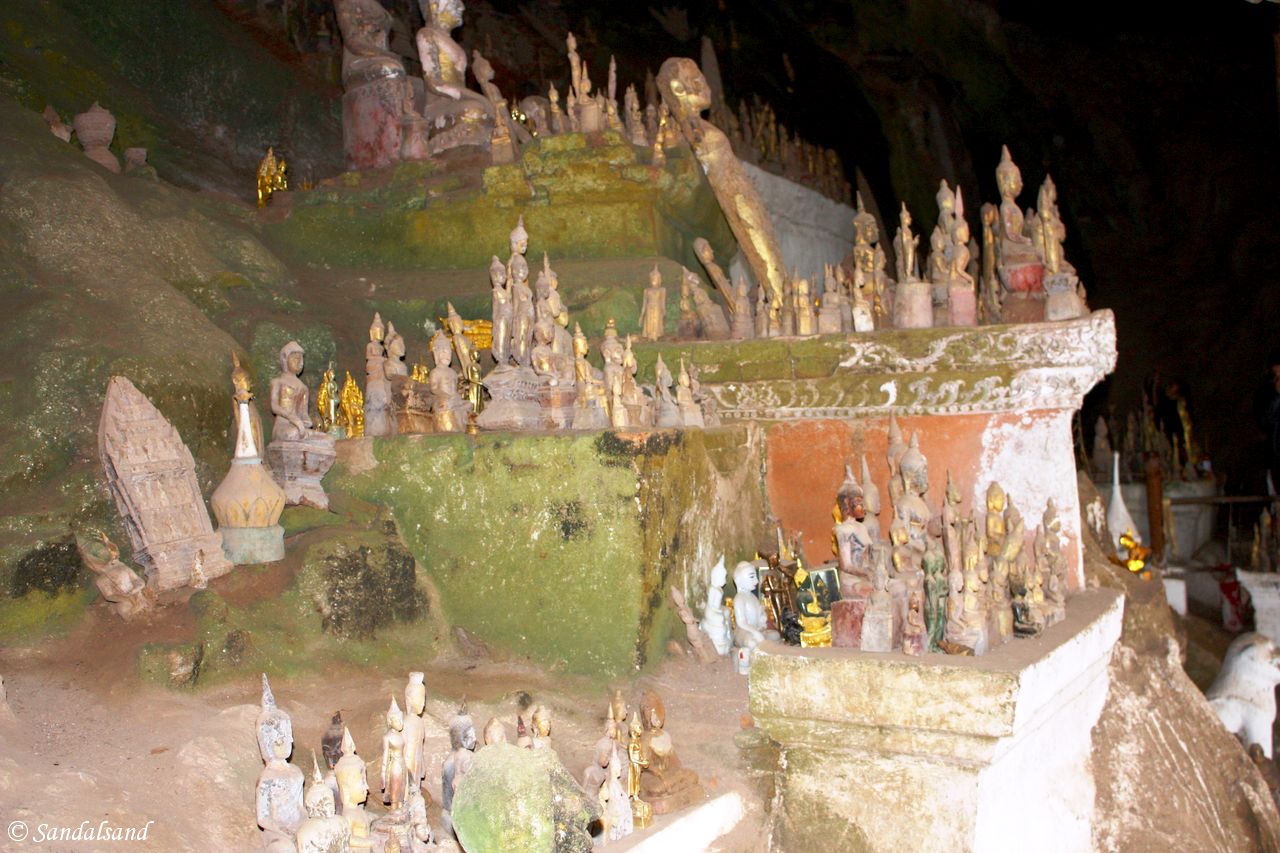
Pak Ou caves on the Mekong River, near Luang Prabang, Laos
6. Cueva del Indio and Cueva de San Miguel, Viñales Valley, Cuba
The Cueva del Indio and Cueva de San Miguel are set in the beautiful landscape of Viñales in eastern Cuba, a World Heritage Site. One may enter the first cave on foot, but you will have to use a boat to go through it. The second is possible to walk through. This means they are not very large, I would say a hundred metres or so. On the other hand, one of the caves in the valley have galleries and corridors for more than 45 km on eight levels – the largest in Latin America.
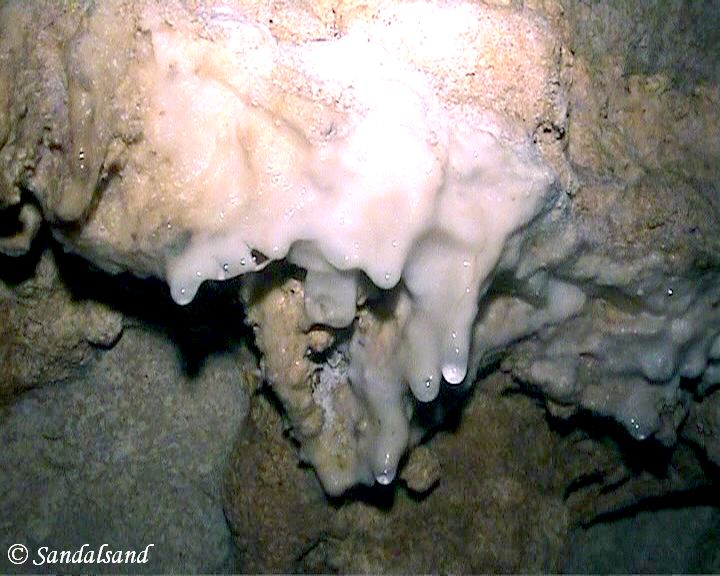
Infrared photo shot in pitch darkness inside the Cueva del Indio, in the Vinales Valley, Cuba
7. St Michael’s Cave, Gibraltar
St Michael’s Cave will be my last presented cave of this kind, the solutional ones. Inside the Rock, the amazing mountain of Gibraltar, there are several man-made (fortress) caves and natural caves as well. This one is the most famous. My picture shows how minerals, rock, in combination with water can form very exciting patterns and colours.
Detail inside St Michael’s Cave, Gibraltar
Sea caves
We find sea caves along coasts around the world. Like most caves, erosion has been the name of the game in forming them. Unlike land-based caves, these ones have been dug by the constant beating of the waves over thousands and millions of year.
8. Ayia Napa, Cyprus
The combination of karst rock and the beating of the sea has produced the large number of sea caves found around this island in the Mediterranean sun, including around Ayia Napa. These caves are rarely deep.
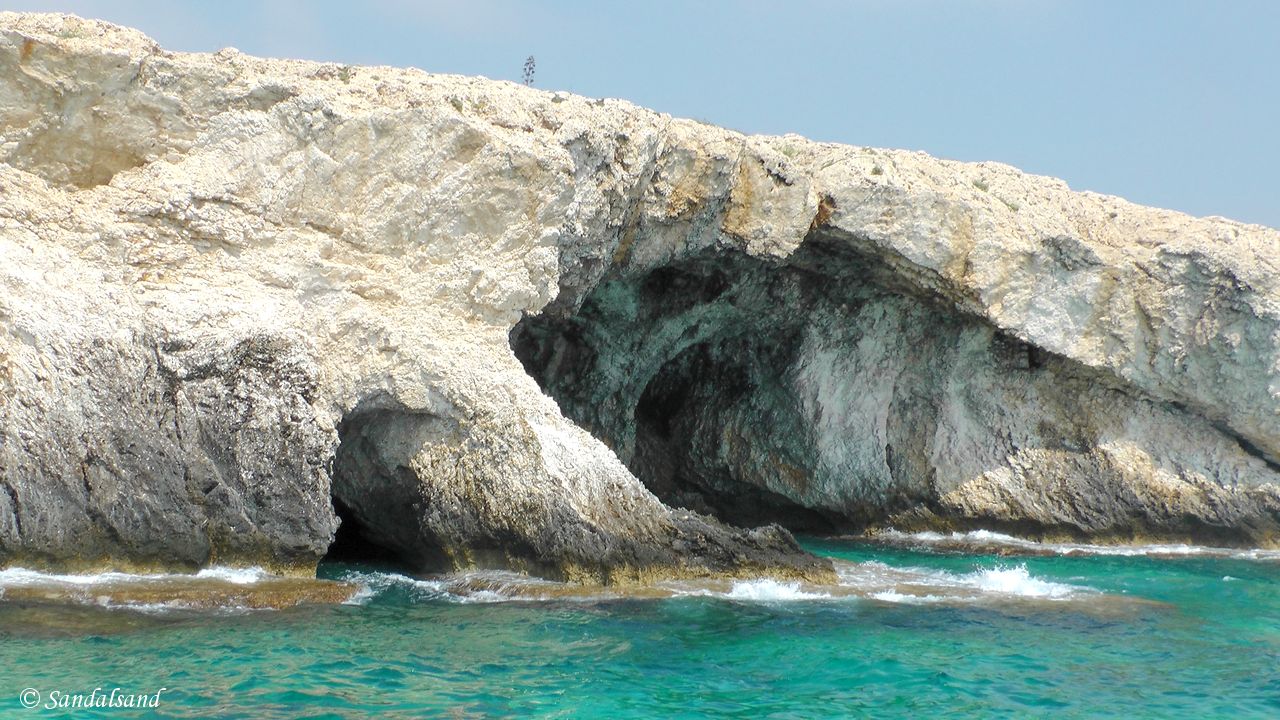
A sea cave in Ayia Napa, Cyprus
Rock shelters
Rock shelters are shallow cave-like openings at the base of a bluff or cliff. Here are two examples.
9. Lumiang Cave in Sagada, the Philippines
The Lumiang Cave pictured below was filled with stacked coffins. Nearby are found coffins hanging from the cliff-face. That is another story however. The reason I mention it is that this part of the northern Philippines have several caves. I found the nearby Sumaguing Cave to be much deeper, but alas, I have no picture of it.

The stacked coffins inside the Lumiang Cave, Philippines
10. Stone Age Cave at Viste, Norway
We have come to the last of the 10 great caves. Stone Age Cave at Viste is actually a cave formed like a sea cave at a time when the sea level was much higher. More precisely: After the last glaciers withdrew from the coast, the land masses rose and left open caves like this inland. This particular cave was the dwelling of some of the first inhabitants of Norway, ever: 10,000 years ago.
The view from inside the cave at Viste, Norway
Further reading
That was 10 great caves. Missing anything? For sure, I’ve had to skip some of my images related to this subject and refrained from mentioning some of my visits. Feel free to search this website for more. In addition, you are surely missing famous places or your own favourites. Chances are I haven’t been there, and I only include my own images and visits in this series.
All articles in this series
(1) Introduction
(2-7) Element: Earth
(2) Great Caves (THIS)
(8) Element: Fire
(9-14) Element: Water
Here are images tagged “cave” on this website. Click to enlarge and browse.

